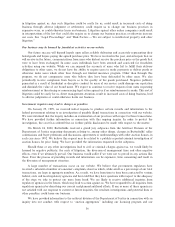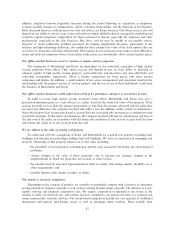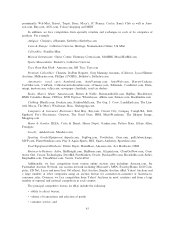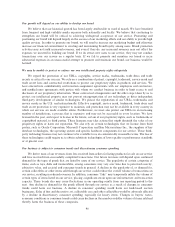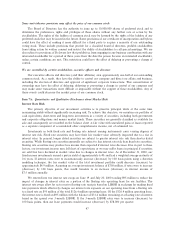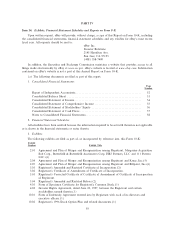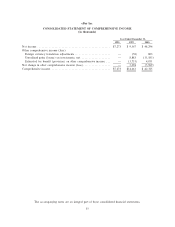eBay 2000 Annual Report Download - page 50
Download and view the complete annual report
Please find page 50 of the 2000 eBay annual report below. You can navigate through the pages in the report by either clicking on the pages listed below, or by using the keyword search tool below to find specific information within the annual report.growth in the numbers of users and amount of traÇc. If the Internet continues to experience increased
numbers of users, increased frequency of use or increased bandwidth requirements, the Internet infrastructure
may be unable to support the demands placed on it. In addition, the performance of the Internet may be
harmed by increased number of users or bandwidth requirements. The Internet has experienced a variety of
outages and other delays as a result of damage to portions of its infrastructure, and it could face outages and
delays in the future. These outages and delays could reduce the level of Internet usage as well as the level of
traÇc and the processing transactions on our service.
Our business is subject to online commerce security risks
A signiÑcant barrier to online commerce and communications is the secure transmission of conÑdential
information over public networks. Our security measures may not prevent security breaches. Our failure to
prevent security breaches could harm our business. Currently, a signiÑcant number of our users authorize us to
bill their credit card accounts directly for all transaction fees charged by us. Billpoint's users routinely provide
credit card and other Ñnancial information. We rely on encryption and authentication technology licensed
from third parties to provide the security and authentication technology to eÅect secure transmission of
conÑdential information, including customer credit card numbers. Advances in computer capabilities, new
discoveries in the Ñeld of cryptography, or other developments may result in a compromise or breach of the
technology used by us to protect customer transaction data. A number of websites have reported breaches of
their security. Any compromise of our security could harm our reputation and, therefore, our business. In
addition, a party who is able to circumvent our security measures could misappropriate proprietary information
or cause interruptions in our operations. An individual has claimed to have misappropriated some of our
conÑdential information by breaking into our computer system. We may need to expend signiÑcant resources
to protect against security breaches or to address problems caused by breaches. These issues are likely to
become more diÇcult as we expand the number of places where we operate. Security breaches could damage
our reputation and expose us to a risk of loss or litigation and possible liability. Our insurance policies carry
low coverage limits, which may not be adequate to reimburse us for losses caused by security breaches.
We must keep pace with rapid technological change to remain competitive
The space in which we compete is characterized by rapidly changing technology, evolving industry
standards, frequent new service and product introductions and enhancements and changing customer
demands. These characteristics are worsened by the emerging and changing nature of the Internet. Our future
success therefore will depend on our ability to adapt to rapidly changing technologies, to adapt our services to
evolving industry standards and to continually improve the performance, features and reliability of our service.
Our failure to adapt to such changes would harm our business. New technologies, such as the development of
a peer to peer personal trading technology, could adversely aÅect us. In addition, the widespread adoption of
new Internet, networking or telecommunications technologies or other technological changes could require
substantial expenditures to modify or adapt our services or infrastructure.
We need to develop new services, features and functions in order to expand
We plan to expand our operations by developing new or complementary services, products or transaction
formats or expanding the breadth and depth of services. We may be unable to expand our operations in a cost-
eÅective or timely manner. Even if we do expand, we may not maintain or increase our overall acceptance. If
we launch a new business or service that is not favorably received by consumers, it could damage our
reputation and diminish the value of our brand. We anticipate that future services will include pre-and post-
trade services.
We are pursuing strategic relationships with third parties to provide many of these services. Because we
use third parties to deliver these services, we may be unable to control the quality of these services and our
ability to address problems if any of these third parties fails to perform adequately will be reduced. Expanding
our operations in this manner also will require signiÑcant additional expenses and development, operations and
other resources and will strain our management, Ñnancial and operational resources. The lack of acceptance of
any new services could harm our business.
45



